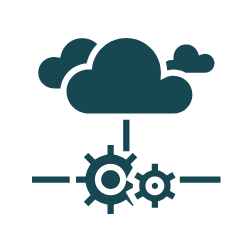The role of technology in the hybrid office
Symetri’s hybrid office guide to the smart ways we all work now, and the smarter ways we’ll work next

Initial transitions to home working in response to pandemic protocols and government requirements, were tactical in nature. They were designed to plug gaps that might have occurred in project/client servicing continuity. Now, businesses are looking beyond the responsive approach to longer term strategies; progressive, pragmatic, and productive.

 COVID has forced new ways of working upon businesses everywhere. As companies adapt, they are discovering more about how the new personality of work can evolve. Benefits are coming to light such as potential savings in real estate costs, a logical outcome of fewer people coming into the office on a regular basis, and the ability to be more flexible as employees gain more of their personal time back as a result of not commuting. Improvements to the environment were also identified as people travelled less.
COVID has forced new ways of working upon businesses everywhere. As companies adapt, they are discovering more about how the new personality of work can evolve. Benefits are coming to light such as potential savings in real estate costs, a logical outcome of fewer people coming into the office on a regular basis, and the ability to be more flexible as employees gain more of their personal time back as a result of not commuting. Improvements to the environment were also identified as people travelled less.
Initial transitions to home working in response to pandemic protocols and government requirements, were tactical in nature. They were designed to plug gaps that might have occurred in project/client servicing continuity. They were a bridge from how we used to work, to how we will work in the future.
Now, businesses are looking beyond the responsive approach to longer term strategies; progressive, pragmatic, and productive. This puts focus on the new working environment model which the hybrid office encapsulates. In addition to this cultural change, those within the Building & Infrastructure and Product Design & Lifecycle industry also need to consider data when looking at their approach to the ‘hybrid office’.
With design and engineering applications, you will be dealing with large files and data sets on a daily basis. This is not much of an issue when you are in an office with the files on a local server, however when remote working is required, we have to consider the impact of latency over the wider area connection.
We also must consider the security and backup of the data. If users are experiencing slow openings and saves for example, there will be a tendency to copy files from the source to the local device which may compromise corporate polices.
Whilst users have gained home access to resources either through a virtual private network (VPN) or a connection to their desktop in the office using software specifically designed to enable remote access, at best, the approach is tactical; effectively a short-term fix. It’s designed to serve the ‘remote’ need when access from a location other than the office is necessary. It is not designed to be a robust, ongoing framework for a semi- permanently dispersed workforce.
Home focus | Office connection
If your business is likely to keep an emphasis on home working, users will now require just as good an experience at home as they once did in the office. This is where Virtual desktops and Software as a Service (SaaS) solutions should be considered to enable your staff to work as efficiently and pain-free as possible.
Virtual desktops
 A virtual desktop infrastructure (VDI) enables users to connect to a virtual instance remotely from anywhere, through any device. It enables users to connect either to the cloud or into the on-premise IT infrastructure. It also makes collaboration easy and seamless; a key factor in effective home working.
A virtual desktop infrastructure (VDI) enables users to connect to a virtual instance remotely from anywhere, through any device. It enables users to connect either to the cloud or into the on-premise IT infrastructure. It also makes collaboration easy and seamless; a key factor in effective home working.
Software as a service (SaaS)
 Deploying SaaS in conjunction with Infrastructure as a Service (IaaS) enables users to continue to work seamlessly from a physical device such as a mobile workstation and connect to those software applications – BIM 360 and Office 365 for example – critical to their roles.
Deploying SaaS in conjunction with Infrastructure as a Service (IaaS) enables users to continue to work seamlessly from a physical device such as a mobile workstation and connect to those software applications – BIM 360 and Office 365 for example – critical to their roles.
This means that users will not always need high-powered workstations with them to run their graphics-intensive Product Lifecycle Management (PLM) or Computer-Aided Design (CAD) software when out of the office, as they will get the same power by connecting to the software via the cloud or on-premise infrastructure.
Nutanix Xi Frame Quick Start Bundle
To help conceptualise this, we've put together a quick start bundle with our partner Nutanix and their product Nutanix Xi Frame, to enable you to run any CAD, CAE or PLM software in your own public cloud subscription, to a browser, on any device, anywhere.
To learn more about Nutanix Xi Frame, visit our product page or get in touch with us. Keep an eye out for next month’s blog post where we’ll look at other solutions which can support longer term hybrid office strategies.
For more information on the role of technology in the hybrid office in the meantime, download our whitepaper https://www.symetri.co.uk/insights/articles/the-role-of-technology-in-the-hybrid-office
Cybersecurity threats don’t always kick the door down—sometimes, they slip in through the cracks. This month, we’re spotlighting three subtle but serious security risks that could be undermining your defences right now.
As 2025 comes to a close, we’re looking back at some of the most impactful cyber threats of the year and more importantly, what they reveal about the challenges ahead. From ransomware tactics to AI-driven phishing and risky app integrations, this round-up highlights where businesses have been most vulnerable and how you can strengthen your defences in 2026.
Learn what Product Lifecycle Management (PLM) is and how it helps teams manage product data, processes, and collaboration across the lifecycle. Discover the key benefits and PLM tools driving innovation.
